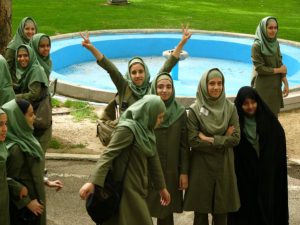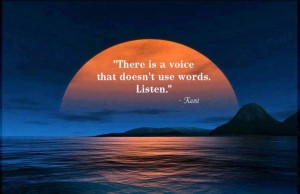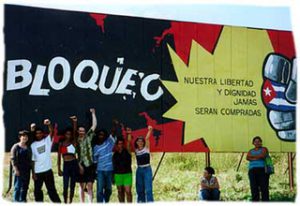Since 1988, Global Exchange has been offering meaningful, socially responsible travel through our Reality Tours. For eight of those years, Drea Hightower has been the backbone of our tours to Cuba. As a tribute to her leadership, and appreciated presence at Global Exchange, we would like to share with you a deeper look at our Reality Tours through the eyes of one of our most passionate team members.
We present to you, a Q&A with Drea.
Question: What separates Global Exchange Reality Tours from other modalities of travel?
Answer: Reality Tours provides participants the opportunity to have unique visits with groups and individuals that you wouldn’t have access to if you were traveling on your own. Our trips are always led by local guides and experts that are educated in a number of areas; they can speak with expertise on a variety of issues, as well as to the realities of the people in-country. Global Exchange and our partners are committed to exposing you as best as possible to the realities on the ground in each country; both the challenges and the achievements.
Question: Do you believe that people to people tourism helps alleviate cultural and political tension?
Answer: Absolutely. Simply giving yourself the space and opportunity to see and feel and experience another country, it’s people, and culture is a first step in suspending the tension that comes from simply not knowing. The same can be said on the other end when folks see you are taking the time to learn about them via travel. In my opinion it speaks volumes.
Question: What does an average day look like when on a Reality Tour?
Answer: When trip leading, I’m always busy. I’m up early, making sure everyone is feeling good and ready to start the day! I work as a team with local guides and drivers to ensure we’re supportive of each other during this experience. I’m always available to our participants to answer questions and facilitate dialogue if necessary. Of course I also take time to connect with our long-time friends and partners on the ground. Trips are a learning opportunity so you’ll also find me taking notes about new developments in-country, or just ideas on how to make our trips better!
For a participant, the day starts with breakfast with their fellow travelers. The morning comprises of meetings with community project leaders, and visits with ICAP hosts to hear about their perspective on Cuba and U.S. relations. After a relaxing, leisurely lunch and cafecito, (oh! and cuban ice cream or flan of course), participants will meet with local artists, visit polyclinics to learn about the healthcare system, and engage with educators through school visits. Undoubtedly, the highlight of the trip is meeting with CDR committees for the defense of the revolution. During this meeting you exchange with community members, which includes: one on one interactions with all age groups, lots of music and dancing, performances from kids while sharing fruits and beverages. This is an incredible opportunity for community building, by breaking down barriers through personal exchange. Also, because the trips are always led by a local guide, it really sets the tone for the tour. Participants are able to travel through a cuban prospective. Such a rich alternative experience would not be possible without our long time relationships with our partners on the ground.
Question: What have the participants expressed of their time in Cuba; regarding their mental state going in, and coming out of such a dynamic experience?
Answer: I talked to a woman today on the phone who is a part of a group of Black educators here in the states. She has been eagerly waiting to return to Cuba with Reality Tours. She told me, “The trip changed my life. It opened my eyes to other possibilities that work in the world.” She was speaking to the fact that a nation is able to survive in a different way than our own, concerning anything from education to healthcare.
Another participant from the New Years Eve trip to Cuba expressed to me that she felt like she came away from the trip as a daughter of the revolution. She truly understood how people were on board with the revolution, and how humbling Cuba has been to recognize that their economic model needs to evolve with the global economy. They are moving forward to be able to successfully progress with the world for their people. She was inspired by the pillars of the revolution, and by the governments ability to take accountability for a system that has not been as successful as they hoped, and then make steps to improve.
You learn in Cuba that the revolution prioritizes things that not even the US has. Like education, health care, the arts, culture, and community. They removed access of private funding/business for programs like healthcare and education. Its not about who’s making money, its about their people and what they need.
Question: How has the reality tour impacted you, and your view on Cuba and the world?
Answer: Well it certainly impacted me in many ways. I’ve sort of become jaded. Not that Cuba has the best systems, but that they do have great systems in place that provides their community with the right to social programs such as health care and education. It has shown me what is possible in a society where you don’t have privatization. It gives me hope that we can strive for better in this country. But it has also opened my eyes to just how much emphasis we put on corporate interests here in the U.S. It just becomes that much more in your face. You start to see how corporations have taken control over aspects of our life. It is as though our government does not prioritize making its people healthy and educated, its about how can they make a dollar.
There is no denying that, politically speaking Cubans are divided. Just as anywhere else in the world. However, I doubt you would ever find a Cuban saying, “Yes, I think privatization is a good idea.” Whether or not you believe in the revolution, the point of the trip is to see what we can learn from Cuba. Why it is a right to exchange with Cubans, to have people to people dialogues, to see what we can learn from Cuba, and how we can apply those things to enrich our lives.
Questions: Are there any last words that you would like readers to take away from this inside scoop on a Global Exchange Reality Tour?
Answer: I would like to share one of my favorite sayings that I believe embodies our Reality Tours, “Suspend disbelief.” If you can just pause and give yourself the opportunity to see something for what it is, knowing it’s not perfect, how we can learn from it, and apply the lessons learned to our own lives. This is the biggest gift of all, and I thank Cuba for giving me the opportunity to do so.
End Q&A
Global Exchange is first and foremost a human rights organization, dedicated to promoting social, economic and environmental justice around the world. Reality Tours is just one of the many ways we aim to make change. By offering experiential educational tours, and connecting people to people, issues with movements, we know that our participants will leave feeling empowered to take action. Traveling is great, traveling with a purpose is even greater. Join us, or learn more about our Reality Tours here!
Special thanks to Drea Hightower,









